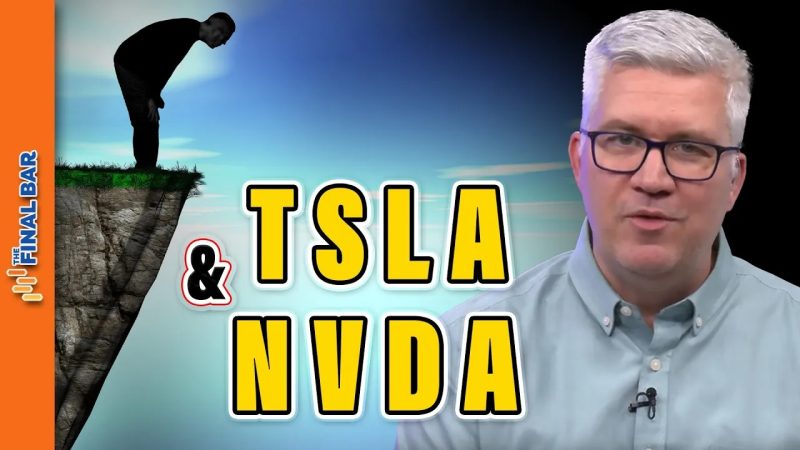Before we begin, it is essential to understand the weight and position both TSLA (Tesla, Inc.) and NVDA (NVIDIA Corporation) hold within their respective industries. A pioneer and powerhouse in electric vehicle production, Tesla has enjoyed a sustained run as market leader. Conversely, NVIDIA operates as the crème de la crème in the world of technology, dominating the Artificial Intelligence (AI) and graphics processing unit (GPU) realms. However, in recent times, both companies seem to have hit a rough patch; hence, the phrase ‘The Mighty Have Fallen.’
Starting with Tesla, a company known for its ground-breaking role in shifting the automotive industry towards sustainable energy, recent trends indicate a significant plunge. Despite being the vanguard in electric vehicles, Tesla appears to be struggling to maintain its momentum, weighed down by hurdles in production and the broader economic environment. Regular critics of TSLA have often pointed to the company’s overvalued stocks. Additionally, flawed timelines and missed production deadlines have significantly impacted Tesla’s credibility, turning loyal investors skeptical.
Perhaps the most notable blow was a significantly shorter-than-expected delivery forecast in early 2021, falling below Wall Street expectations. TSLA noted demand-related challenges, including supply-chain difficulties linked to the worldwide microchip shortage. These ongoing issues were further amplified when other competitors, like Rivian and Lucid, emerged, gaining ground in the Electric Vehicle (EV) industry.
Despite Tesla’s downturn, it’s important to remember the company’s disruptive nature. The transition to sustainable energy is inevitable, and Tesla’s long-term goals align with this shift, leaving us to question whether this is a mere stumble or a more severe decline.
Let us now turn our gaze to NVIDIA. As an enormous player in the global tech industry, NVIDIA’s recent trials might come as a surprise. This major supplier of GPU’s for PC and console gaming, professional visualization, data centers, and more, has seen a substantial slump recently. Primarily, the rollercoaster ride is attributed to the crypto mining bust, which had previously driven a significant portion of NVDA’s revenue.
Moreover, the evolving geopolitical tensions and trade restrictions between the US and China have also made a meaningful dent in NVIDIA’s progress. With China taking a more stringent stance on technology and dissuading companies from external influences, it inevitably challenged NVIDIA’s growth prospects given that China contributes a significant portion of its global revenue.
Another hurdle NVDA faces is the considerable opposition to the proposed $40 billion acquisition of Arm Ltd., a leading UK-based semiconductor and software design company. If the acquisition gets rejected, NVDA’s vision of building an AI powerhouse may suffer, impacting its projected growth significantly.
However, NVDA’s unique position in AI, machine learning, data centers, and gaming continues to provide rich prospects. While the company remains on rocky terrain currently, it’s hard to overlook the potential NVIDIA holds in the technological transformation landscape.
In conclusion, these market trends provide a stark reminder that even giants can stumble. But it’s key to remember that both TSLA and NVDA possess strong track records of innovation and market leadership. While current circumstances may reflect a downfall, the overarching trajectory for both companies factors into future growth, disruptive potential, and industry dominance. Therefore, while currently, it may seem like ‘The Mighty Have Fallen,’ the final verdict is far from decided. For now, they are merely on rocky terrain.




